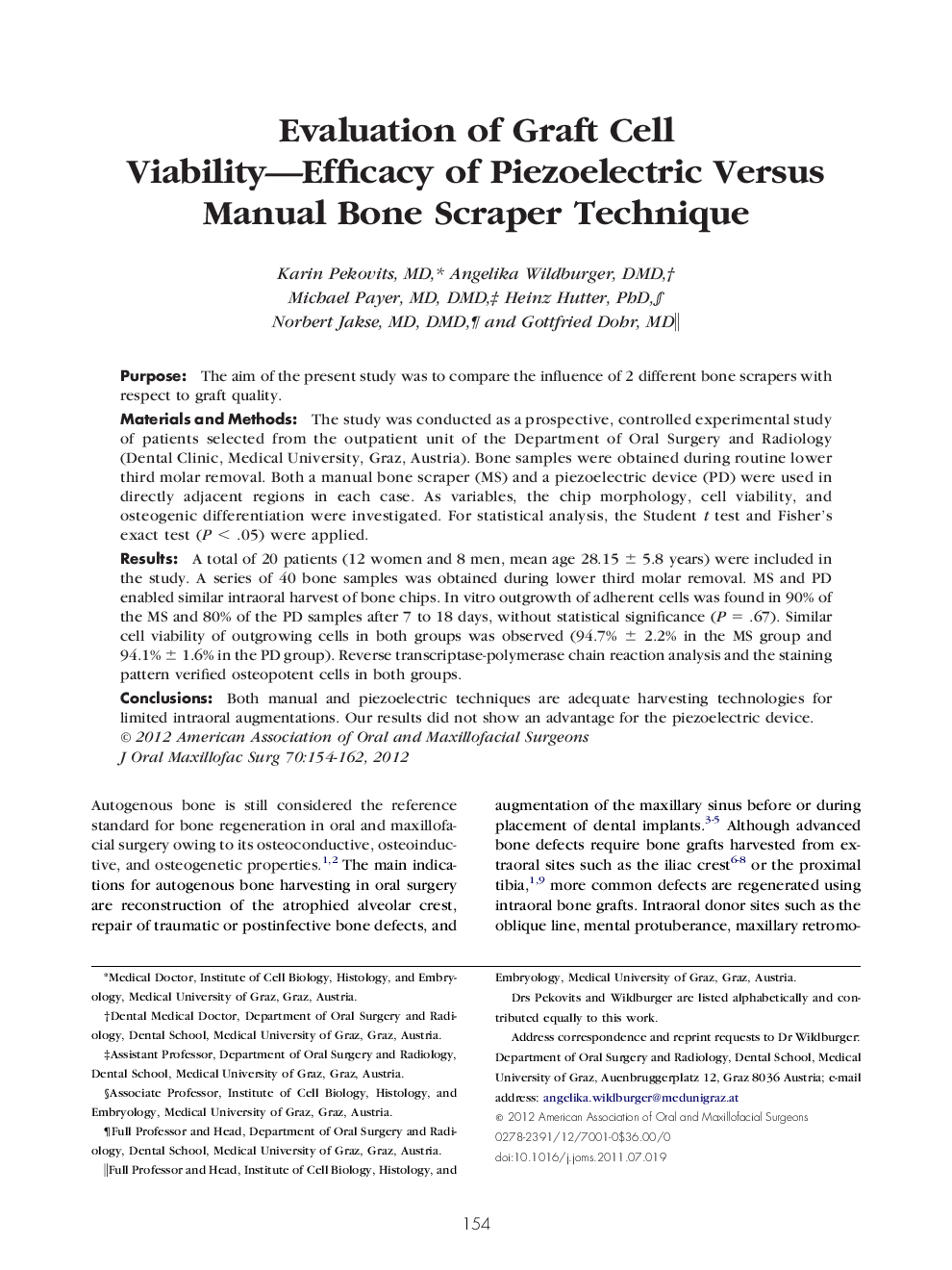| Article ID | Journal | Published Year | Pages | File Type |
|---|---|---|---|---|
| 3156739 | Journal of Oral and Maxillofacial Surgery | 2012 | 9 Pages |
PurposeThe aim of the present study was to compare the influence of 2 different bone scrapers with respect to graft quality.Materials and MethodsThe study was conducted as a prospective, controlled experimental study of patients selected from the outpatient unit of the Department of Oral Surgery and Radiology (Dental Clinic, Medical University, Graz, Austria). Bone samples were obtained during routine lower third molar removal. Both a manual bone scraper (MS) and a piezoelectric device (PD) were used in directly adjacent regions in each case. As variables, the chip morphology, cell viability, and osteogenic differentiation were investigated. For statistical analysis, the Student t test and Fisher's exact test (P < .05) were applied.ResultsA total of 20 patients (12 women and 8 men, mean age 28.15 ± 5.8 years) were included in the study. A series of 40 bone samples was obtained during lower third molar removal. MS and PD enabled similar intraoral harvest of bone chips. In vitro outgrowth of adherent cells was found in 90% of the MS and 80% of the PD samples after 7 to 18 days, without statistical significance (P = .67). Similar cell viability of outgrowing cells in both groups was observed (94.7% ± 2.2% in the MS group and 94.1% ± 1.6% in the PD group). Reverse transcriptase-polymerase chain reaction analysis and the staining pattern verified osteopotent cells in both groups.ConclusionsBoth manual and piezoelectric techniques are adequate harvesting technologies for limited intraoral augmentations. Our results did not show an advantage for the piezoelectric device.
